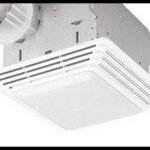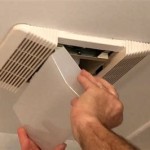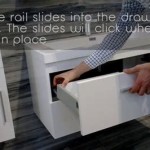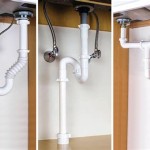Bathroom Sink Handle Won't Turn: Troubleshooting and Solutions
A bathroom sink handle that refuses to turn is a common plumbing problem that can be frustrating and inconvenient. While seemingly minor, a stuck handle can prevent access to water, hindering hygiene routines and potentially leading to water waste if a faucet is already dripping. Understanding the potential causes and possessing the knowledge to troubleshoot and address the issue can save homeowners time, money, and the need for a costly professional plumbing service. This article will explore the common reasons behind a stubborn bathroom sink handle and offer practical solutions for resolving the problem.
The intricacies of a bathroom sink faucet involve several components working in unison. These components may include the handle itself, the valve stem, the cartridge or ceramic disc, and various o-rings and washers. Over time, mineral buildup, corrosion, or component failure can impede the smooth operation of these parts, leading to a handle that is difficult or impossible to turn. Before attempting any repairs, identifying the type of faucet is crucial, as different faucet types have varying internal mechanisms and repair procedures. The most common types of bathroom sink faucets include compression faucets, ball faucets, cartridge faucets, and ceramic disc faucets.
Identifying the Faucet Type
Determining the type of faucet is the first step in troubleshooting a stuck handle. Each type has a distinct design and potential failure points. Compression faucets are the oldest and most basic type, characterized by separate hot and cold water handles that, when turned, compress rubber washers against valve seats to stop the flow of water. Ball faucets typically feature a single handle that controls both water flow and temperature using a slotted ball inside the faucet body. Cartridge faucets also utilize a single handle, which operates a cylindrical cartridge to regulate water flow and temperature. Ceramic disc faucets are the most modern type, recognized by their single lever handle and smooth operation. They use two ceramic discs that slide over each other to control water flow.
A visual inspection can often reveal the faucet type. Compression faucets will have separate hot and cold water handles and may be slightly older in design. Ball faucets, with their single handle and rounded spout, are relatively easy to identify. Cartridge faucets typically have a sleek, modern appearance with a single handle that moves smoothly up and down or side to side. Ceramic disc faucets are distinguished by their modern design and the exceptionally smooth movement of the single lever handle. If a visual inspection is insufficient, consulting the original faucet documentation or searching online using the faucet's brand and model number can provide definitive identification.
Once the faucet type is identified, focusing on the potential issues specific to that type becomes easier. This targeted approach streamlines the troubleshooting process and increases the likelihood of a successful repair. For instance, a stuck handle on a compression faucet is often due to a worn-out washer, while a stiff handle on a cartridge faucet may indicate a corroded or damaged cartridge.
Common Causes of a Stuck Bathroom Sink Handle
Various factors can contribute to a bathroom sink handle becoming difficult or impossible to turn. These factors range from simple mineral buildup to more complex mechanical failures. Understanding these common causes allows for a more informed and effective approach to diagnosing and resolving the problem.
One of the most frequent culprits is mineral buildup. Hard water, containing high concentrations of calcium and magnesium, can deposit minerals inside the faucet over time. This buildup can accumulate around the valve stem, cartridge, or ceramic discs, hindering their movement and preventing the handle from turning smoothly. Mineral deposits can also cause corrosion, further exacerbating the problem.
Corrosion, resulting from the interaction of water and metal components, can also seize the internal mechanisms of the faucet. This is particularly prevalent in older faucets or those exposed to corrosive water conditions. Corrosion can cause the valve stem or cartridge to fuse to the faucet body, making it impossible to rotate the handle. In some cases, corrosion can even lead to the breakage of internal components.
Another common cause is worn or damaged o-rings and washers. These small rubber or plastic components create a watertight seal within the faucet. Over time, they can dry out, crack, or become brittle, losing their ability to seal effectively. As a result, water may leak around the handle, and increased friction can make it difficult to turn. In compression faucets, worn-out washers are especially common, causing both leaks and difficulty turning the handle.
In cartridge and ceramic disc faucets, the cartridge itself can become damaged or clogged with debris. This can restrict the flow of water and make the handle stiff or unresponsive. Replacing a damaged cartridge is often the best solution in these cases. Similarly, in ball faucets, the slotted ball can become corroded or worn, leading to similar issues.
Finally, improper installation or maintenance can also contribute to a stuck handle. Overtightening screws or neglecting to lubricate faucet components during installation can create undue stress and friction, leading to premature wear and tear. Regular cleaning and lubrication can help prevent these issues and prolong the life of the faucet.
Troubleshooting and Repair Steps
Once the faucet type is identified and the potential causes are understood, the next step involves troubleshooting and performing the necessary repairs. This process may require some basic tools and knowledge of plumbing procedures. Safety is paramount, so turning off the water supply to the faucet before beginning any work is crucial.
The first step is to visually inspect the faucet for any obvious signs of damage or corrosion. Look for leaks around the handle, cracks in the faucet body, or mineral deposits on the handle or spout. If there are visible signs of corrosion or mineral buildup, cleaning the affected areas with a descaling solution can help loosen the handle.
If a visual inspection does not reveal any obvious problems, disassembling the faucet may be necessary. The disassembly process will vary depending on the faucet type, but generally involves removing the handle, escutcheon (the decorative plate around the base of the handle), and any retaining nuts or screws. Before disassembling the faucet, it is helpful to consult the faucet’s documentation or search online for disassembly instructions specific to the faucet's make and model.
For compression faucets, the most common repair involves replacing the worn-out washer. After disassembling the handle and valve stem, inspect the washer at the end of the stem. If it is cracked, flattened, or deteriorated, replace it with a new washer of the same size and type. Apply a small amount of plumber's grease to the new washer before reassembling the faucet. This helps to create a watertight seal and prevent future wear.
For cartridge faucets, removing and inspecting the cartridge is necessary. After removing the handle and retaining clip, the cartridge can usually be pulled straight out of the faucet body. Inspect the cartridge for any signs of damage, such as cracks, corrosion, or mineral buildup. If the cartridge is damaged or clogged, replace it with a new cartridge of the same type. Lubricate the o-rings on the new cartridge with plumber's grease before inserting it into the faucet body.
For ceramic disc faucets, the repair process is similar to that of cartridge faucets. However, ceramic disc faucets are generally more complex and may require more specialized tools. After removing the handle and escutcheon, the ceramic discs can be accessed and inspected. If the discs are damaged or worn, they should be replaced as a set. Lubricate the discs with plumber's grease before reassembling the faucet.
For ball faucets, the repair typically involves replacing the ball assembly or the valve seats and springs. After removing the handle and retaining ring, the ball assembly can be lifted out of the faucet body. Inspect the ball for any signs of corrosion or wear. Replace the ball assembly if necessary. Also, inspect the valve seats and springs located beneath the ball. These components can become worn or corroded, leading to leaks and difficulty turning the handle. Replace any damaged or worn valve seats and springs.
After completing any repairs, reassemble the faucet in the reverse order of disassembly. Ensure that all components are properly aligned and tightened. Turn the water supply back on slowly and check for leaks. If there are any leaks, tighten the connections further or re-examine the components to ensure they are properly seated and sealed.
If the handle is still difficult to turn after completing the repairs, consider applying a small amount of plumber's grease to the valve stem or cartridge. This can help to lubricate the moving parts and reduce friction. However, be careful not to over-lubricate, as excessive grease can attract dirt and debris, which can eventually clog the faucet.
In some cases, the problem may be more complex and require the assistance of a professional plumber. If the faucet is severely corroded, the valve body is damaged, or the problem persists after attempting the above repairs, it may be best to call a plumber to avoid further damage or complications.

Faucet Handle Hard To Turn

Stuck Or Hard To Turn Pfister Faucet Handle Easy 0 Repair

Bathroom Handle Stiff Or Difficult To Operate

What To Do If Your Faucet Handle Is Hard Turn

How To Tighten Faucet Handle Homeserve Usa

How To Fix A Hard Turn Faucet Handle So Easy The Frugal Girls

How To Fix A Hard Turn Bathroom Faucet Handle

Lav Faucet Hot Side Handle Stuck

My Kitchen Faucet Won T Turn Off

Moen Faucet Handle Keeps Twisting Out Of Position
Related Posts







